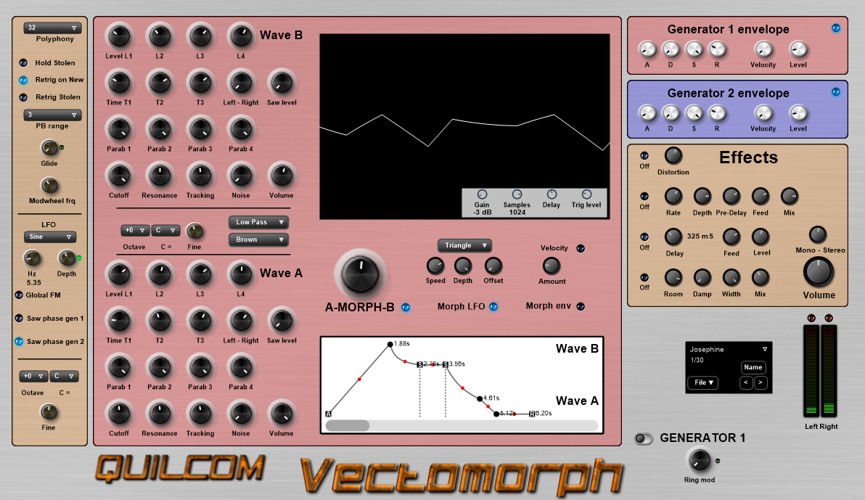
Vectomorph allows the exploration of synthesis using vector oscillators.
This oscillator waveform is made up from 4 lines where each line is described by a level (affecting rate of change) and a point in time for the line to end. The start and end point of each cycle is zero so this needs 4 levels but only 3 time-points, since the end time of the cycle is the same as the start of the next cycle.
The fiendishly clever Martin Vicanek designed the oscillator which uses parabola oscillators and varies the amplitude and phase of each to produce linear sections. This method allows for further variations of the curviness of the lines by controlling the relative amplitudes of the parabola waves. The curviness subtly affects the higher harmonic content. The oscillators produce a clean sound due to employing anti-aliasing techniques.
In addition, a sawtooth wave can be added to increase the amplitude of higher harmonics. A noise source is provided (3 types) and a state variable filter.
The parameters that control the wave shape, noise level and filter settings can be modulated in real-time, and in the Vectomorph this is realised by shifting between 2 sets of controls. The shifting produces true morphing of the wave shape between the controls’ settings and can be achieved manually, with an LFO, or a multi-stage envelope generator, or any combination of these 3 sources.
There are 2 identical generators provided and each can be tuned individually to further increase the range of possibilities.
Visit: Vectomorph
